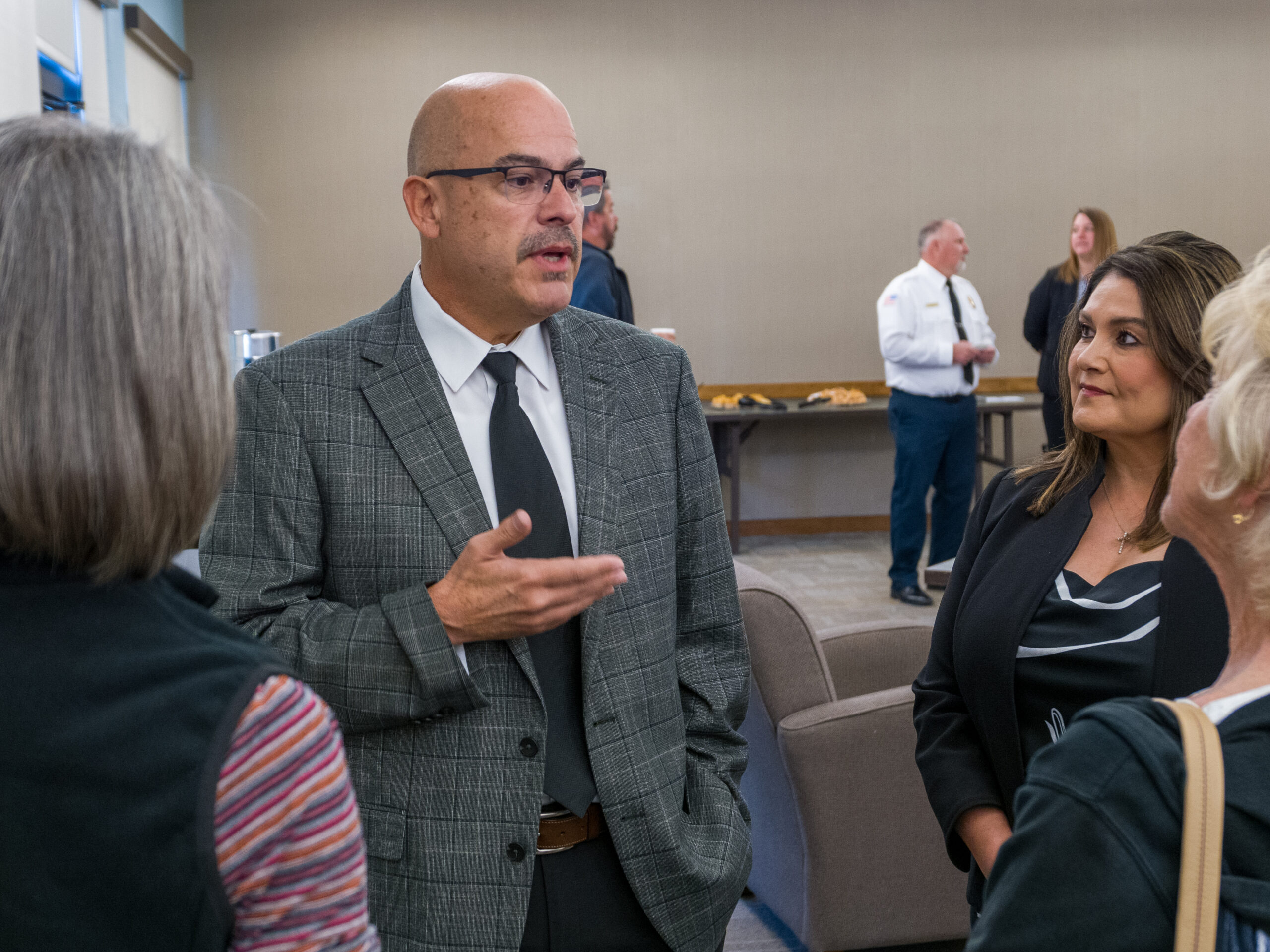By Rabbi Alicia Magal
Special to Larson Newspapers
Hanukkah is the Jewish winter festival of light and freedom. While it does not have the same weight and significance in the Jewish cycle of sacred seasons as the High Holy Days or the biblical festivals of Passover, Shavuot and Sukkot, it is a very popular holiday and contains many layers of meaning.
One element is in relation to nature and offers a natural human response to the increasing darkness of short winter days by bringing in light and warmth in mid-winter.
Another important reason for Hanukkah is historical. The name “Hanukkah” means “dedication” in Hebrew and is based on the historical event of the uprising of farmers and non-military citizens of the ancient land of Israel who revolted against the Greek-Syrian oppression from 169-164 BCE [Before the Common Era].
Edicts that prohibited keeping Jewish traditions and laws were hard to bear, and actions like putting statues of Greek gods in the holy Temple of Jerusalem led to a point where accommodation to the cultural and religious pressures of the expanding Seleucid Empire was no longer possible.
A small band of Maccabees — nicknamed because they struck like a “hammer” — used guerilla fighting tactics against the heavily armed Syrian army which was supplied and trained by Greek leadership.
The victory of the Jewish freedom fighters in 164 BCE allowed the band of Maccabees and their followers to enter the Temple, cleanse it of unclean animals and statues, and rekindle the large golden menorah — the seven-branched candelabra. Only a very small jar of purified oil was found, but nevertheless the Maccabees used that small amount to relight the menorah and re-dedicate the Temple. They didn’t wait until a new supply could be prepared. Miracle! That small quantity of oil lasted eight days throughout the festival of rededication. Based on Talmudic commentary from the second to fifth centuries of the Common Era, the miracle of the oil is the emphasized theme of the festival of Hanukkah; not the military victory.
Each night an additional candle is lit on the hanukkiah, the special Hanukkah menorah with nine branches; eight are for the eight days of Hanukkah with the ninth serving as the helper candle with which the others are kindled. In addition to the blessings said when the candles are lit, there are many traditional songs in Hebrew and English, such as “Rock of Ages,” “The Dreidle Song” and more contemporary songs such as the one made famous by Peter Paul and Mary, “Light One Candle for the Maccabee Children.”
On the spiritual level, there is an additional meaning of Hanukkah. The lesson is the realization that there is power in the few over the many, of light over darkness, and the assurance that a little bit of faith can serve as sufficient to carry one through to the completion of one’s task, one’s journey. It is a message of hope and faith.
Whether people, and especially children, consciously know about these levels of meaning or not, everyone enjoys the customs associated with the holiday’s food and fun. Each dish, song and game teaches about some aspect of the holiday. Traditional foods served at this holiday include latkes and potato pancakes, and in Israel, sufganiot, or small jelly-filled doughnuts. Why these particular dishes? Because they are prepared in oil and remind us of the miracle of the small amount of oil which sufficed to keep the menorah kindled in the ancient Temple.
Games played by children are both fun and also teach about the holiday. Spinning tops, called dreidles in Yiddish or S’vivonim in Hebrew, bear Hebrew letters on each side. Players put nuts, coins or chocolate gold coins, “gelt,” into the middle and spin to see on what letter the dreidle will land. On each side is a letter: Nun, Gimmel, Hey, or Shin, standing for Nes Gadol Haya Sham — “A Great Miracle Happened There.” In Israel, the dreidles have a different last letter, Peh, for Po, “Here,” since the miracle of Hanukkah occurred close by, in the village of Modi’in and in Jerusalem. The dreidles can be small and simple, made out of wood, metal or ceramic, or they can be decorated art pieces made of glass and painted with scenes of Jerusalem, or made with an internal chip so that when they spin a Hanukkah song begins to play. I even saw one that has a colored marker at the spinning point and thus creates designs when the players spin it on large paper spread out on the floor.
The synagogue gift shop has Hanukkah supplies such as hannukiot [Hanukkah menorahs], candles, dreidles and chocolate gelt coins, as well as many other gifts for the holiday.
The JCSVV annual Hanukkah celebration for the Jewish community will be held on Sunday, Dec. 9, for the lighting of the second candle of the holiday. When people pass by the synagogue on Hwy. 179, they can see a large Hanukkiah on the roof of the synagogue. Each night an additional candle is lit until all eight lights are brightly lit. This is a symbol of our wish to increase light and bring blessings of hope, faith and strength in the face of oppression and challenges to freedom.
For more information, contact me at 204-1286 or visit www.jcsvv.org.
Alicia Magal is the rabbi at the Jewish Community of Sedona and the Verde Valley.


